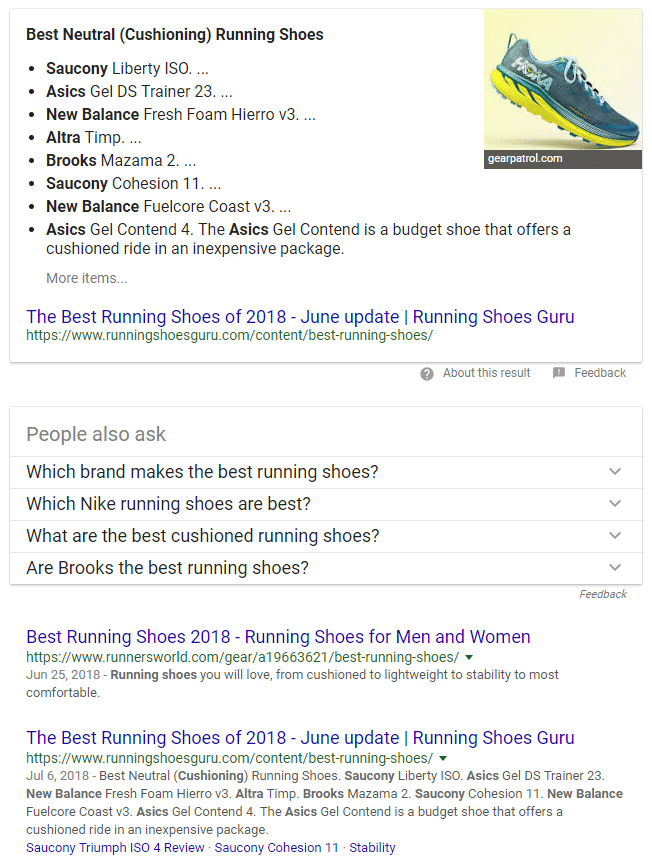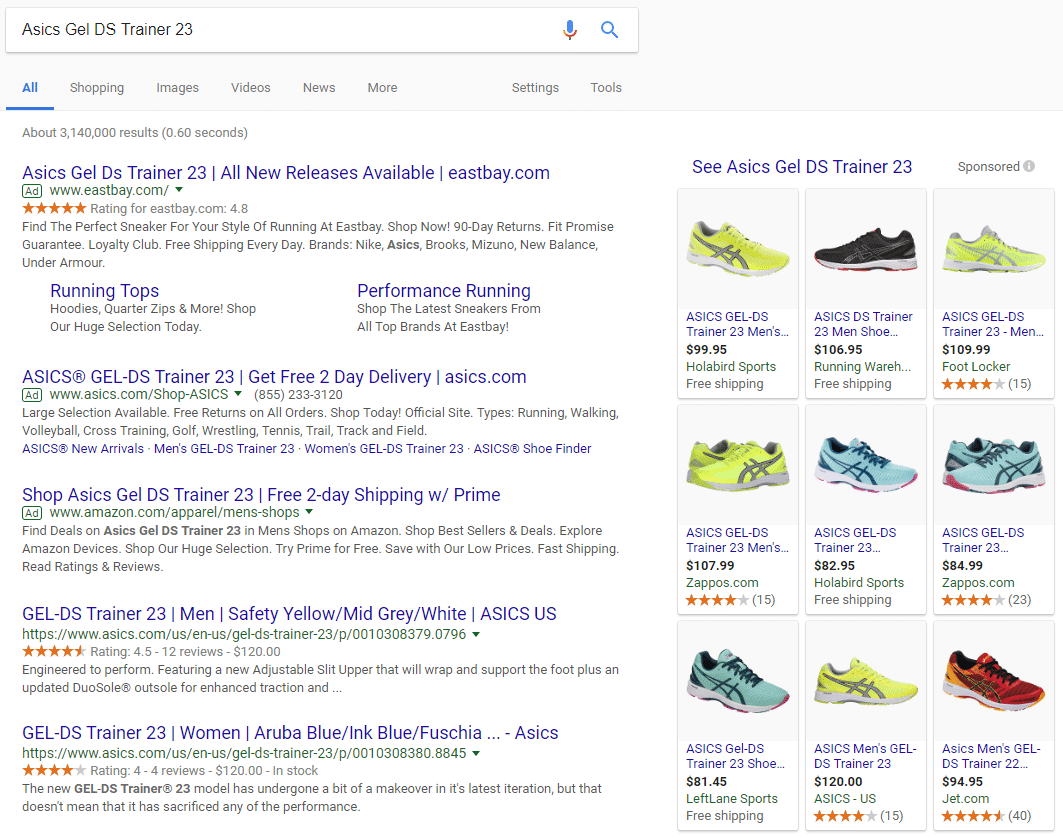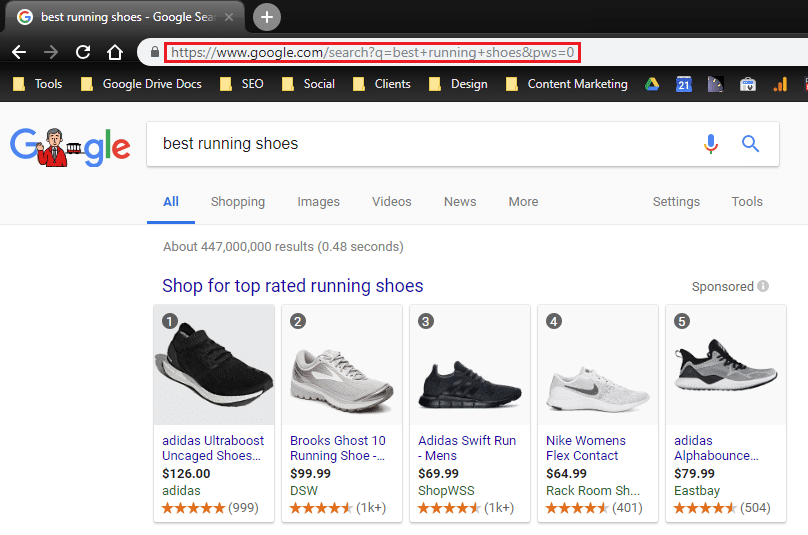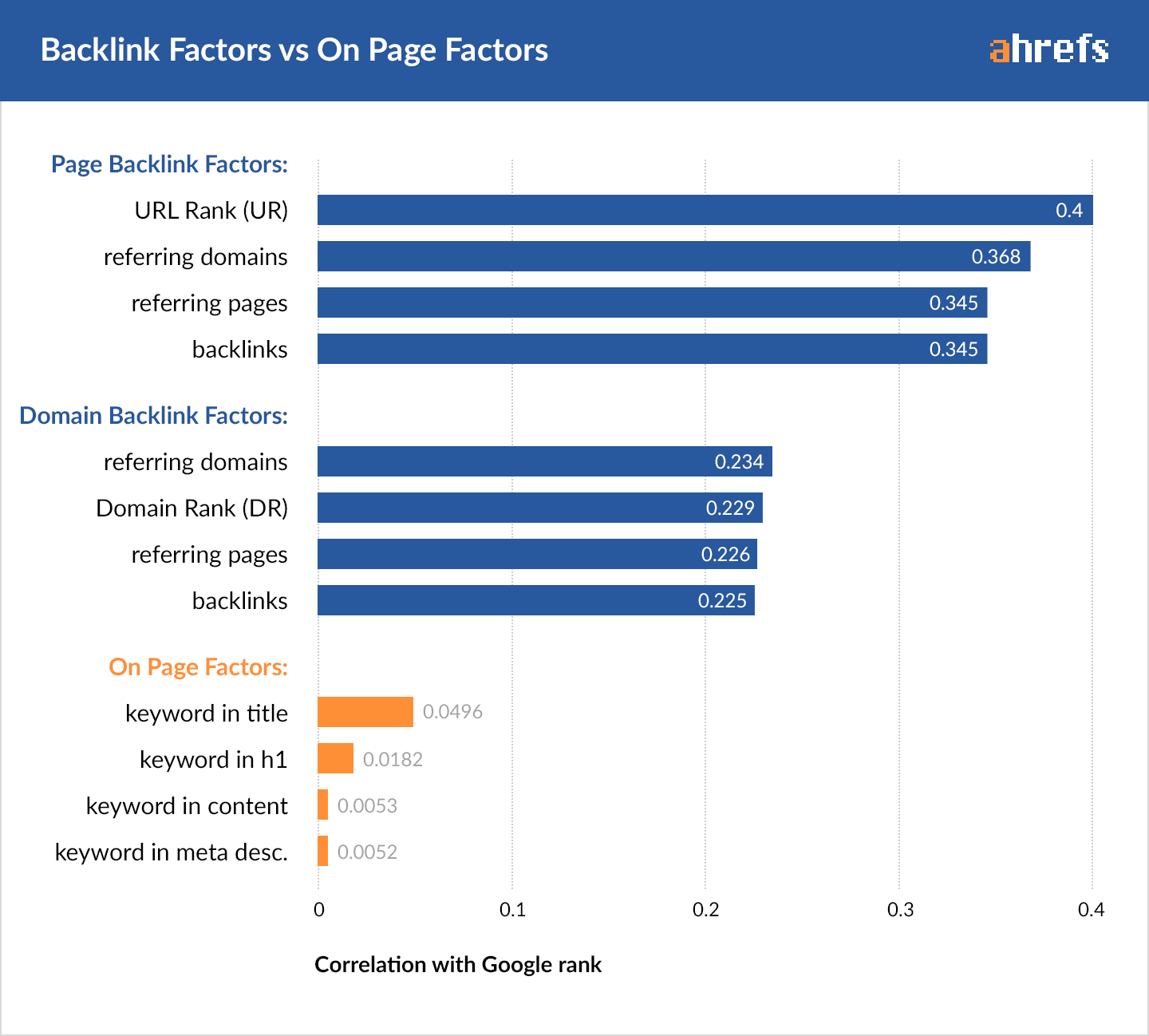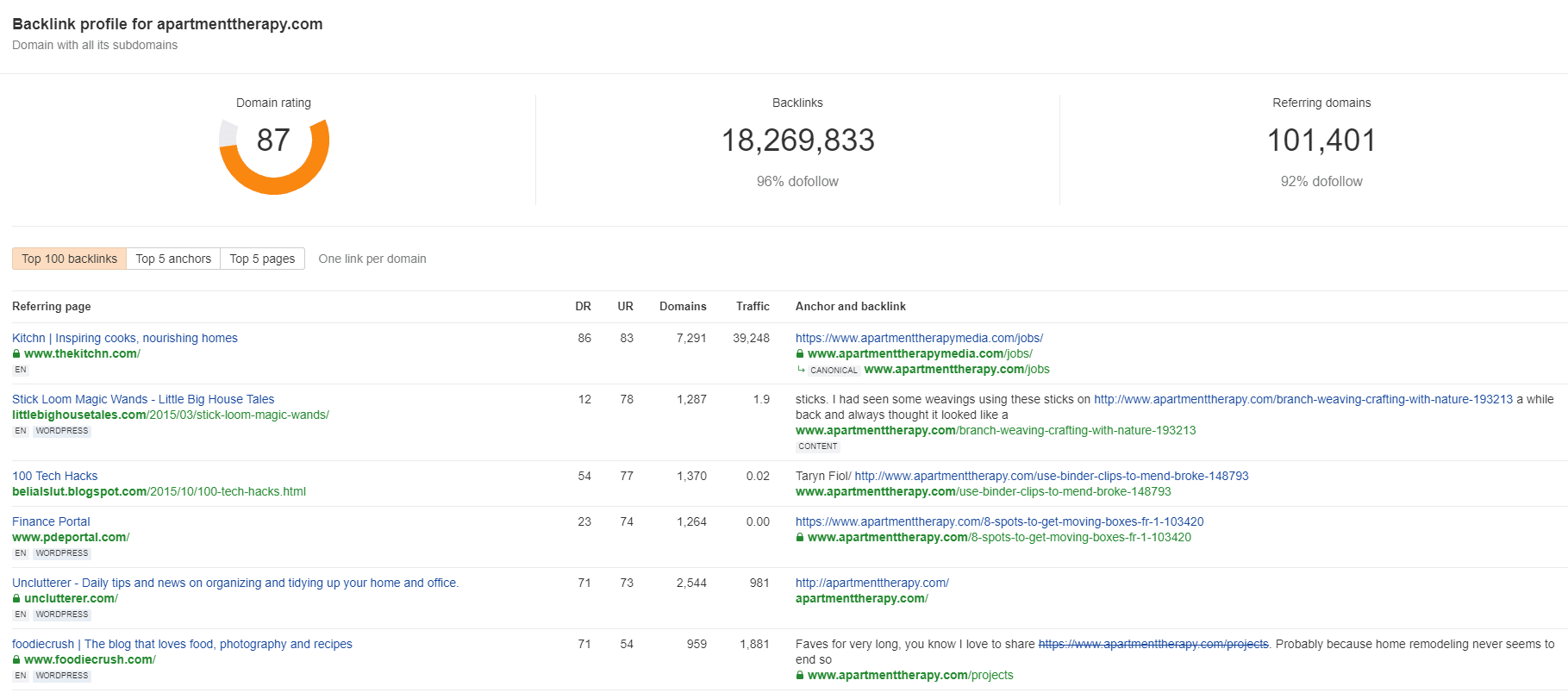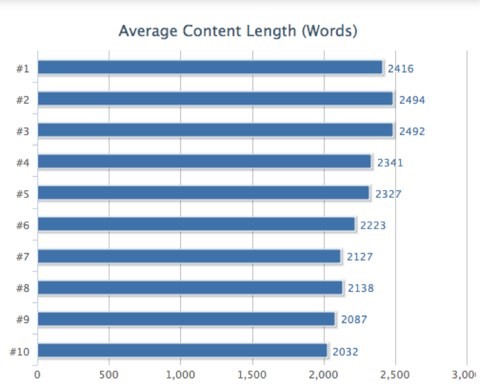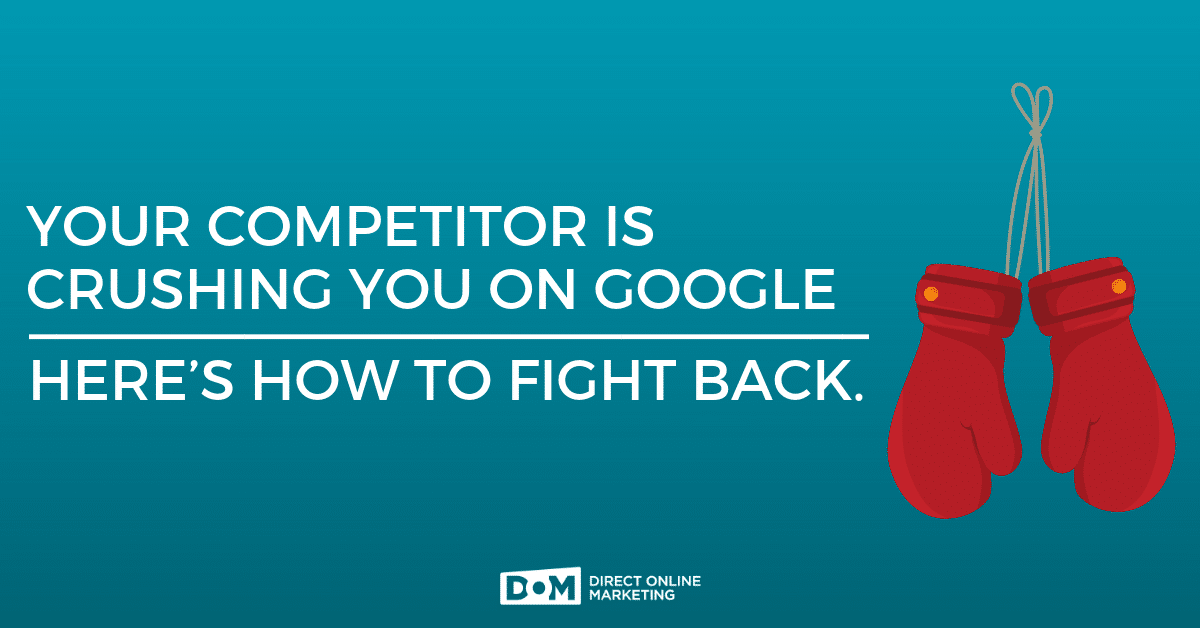
Have you ever asked yourself why your competitor’s website ranks so much higher on Google?
Countless brands and publishers rely on search engine optimization (SEO) to improve organic search performance.
But even after concerted efforts to improve their rankings, many websites are left scratching their heads as to why they’re not getting the results they want.
The fact is that rankings for your target keywords matter.
Whenever your competitor ranks higher than you for a keyword, they earn more traffic, more leads, and more sales.
If your site is just one position lower than your competitor, they are benefitting infinitely more; even when your site performs well for a keyword.
No one likes taking a backseat to the competition, but we’ve got some great news.
You can improve your organic rankings. All it takes is a little know-how and persistence.
In combination with some competitive analysis, this guide will help you figure out why your competitor outperforms you on Google Search. Not only that, we have a few tips on how you can fight back and claim the rankings you deserve.
Why does my competitor rank higher than me?
Try to remember what Google is seeking to accomplish for their users.
Google regularly scours as much of the Internet as it can, while also attempting to understand the value and context of every web page in its “index.”
When a search happens, Google relies upon its proprietary algorithm to judge what web pages/content in its index best serve the intent of the user.
Let’s say a person wants to buy a new pair of running shoes but doesn’t know what brands to consider or how much to spend. They might search for [best running shoes 2018], in which the results would look something like this:
The first page of search results displays an answer snippet from the top-ranking blog post, and nearly all other results are similar style posts from multiple websites.
But let’s say after evaluating a few helpful blog posts, they decide on a specific shoe to purchase. This person might search for the exact product:
In this example, the search triggers significantly more ads. Additionally, the top two results belong to the manufacturer of this particular shoe, followed by other shoe retailers.
The two above scenarios demonstrate the differences between what Google is seeking to satisfy for informational vs. transaction-based searches. Understanding what users intend to get from a search is critical when optimizing your website.
Google is trying to provide its users with trustworthy results from reputable websites that answer their query, while also providing a relatively good user experience.
If your competitor ranks higher, something is leading the search engine to believe that your content is inferior for satisfying user intent.
SEO is all about creating and improving content for search users while also giving Google every reason to serve your content over your competitors.
Here’s how you can improve your rankings through competitive analysis.
1. They’re Doing a Better Job of Answering Intent
Identifying keywords can be easy; figuring out the intent behind those keywords requires a little finesse.
The absolute best way to understand intent is by performing a manual search for your target keyword.
Because Google tries to serve personalized results, your search might look different from what others will see. Here’s how to get “depersonalized” search results on Google.
-
- Open an incognito version of your browser (on Google Chrome, you can open a new window with Ctrl + Shift + N)
-
- Perform your search
- Append the following to the end of the URL in the address bar and hit enter —> &pws=0
We should note that this process doesn’t always work with location-specific searches, but it will get you better results than performing a search the standard way.
Once you’ve taken these steps to reduce the chance of personalized results, analyze everything that comes up on the first page.
Consider things such as:
-
- How many ads populate?
-
- Is there a video or image carousel?
-
- How many answer snippets and/or knowledge boxes?
- What types of content ranks for the keyword? —Is it a blog post, sales page, gated resource, visual asset, or something else?
That last one is pretty important to look at since the type of content that ranks is ultimately what Google thinks will best satisfy the user’s intent.
If your competitor is doing a better job than you at answering user intent, you will have your work cut out for you.
2. Google Assumes They’re More Reputable
Intent is really important, but search engines also want to serve content from websites that they deem to be trustworthy and reputable.
Google judges trustworthiness by evaluating brand signals and a website’s backlink profile.
Brand Signals
In Google’s eyes, brands with a consistent online footprint often offer users a better online experience and relevance. Google considers things such as brand mentions and their overall online presence.
For the most part, websites can do a lot to control or improve their brand signals:
-
- Staying active on social media platforms
-
- Publishing new or improving existing content on a regular basis
-
- Guest posting on other industry-relevant websites
-
- Setting up Google Alerts for negative press mentions
-
- Using social listening tools to engage with customers
-
- Following best practices for press releases
- Maintaining profiles on review websites (e.g. Yelp, Google My Business, Clutch, etc.)
Backlinks
One of the most important things Google looks at when evaluating the credibility of a website is its backlink profile.
Across the Internet, every single link which points back to your website is considered a backlink. Google looks at how many backlinks your site has as well as the quality and relevance of the links pointing to your site.
If a website links to yours, they’re essentially vouching for you.
Generally speaking, with more backlinks, your site has a better chance of being perceived as trustworthy.
Below is from original research conducted by Ahrefs where they examine how backlinks have potentially more of an impact on rankings than on-page SEO factors.
Keep in mind that acquiring backlinks and improving your site’s profile has many considerations and implementing a strategy can become complicated.
Without making an explicit recommendation on where to start with a link building campaign, try reading a few helpful posts on our blog to learn more on that subject.
The first step in improving your backlink profile?
Simple—perform a little competitor benchmarking to see how they stack up.
You can approach this in two ways:
- Domain authority (DA): Domain authority is a helpful metric coined by Moz, an SEO software company.
Moz has a tool which evaluates a website’s backlink profile and assigns a score between 0 and 100. The higher the DA, the more likely a site is deemed to be “authoritative” or trustworthy. Although it is somewhat of a subjective metric, DA is a quick method of comparing two websites’ backlink profiles.
To figure out a website’s DA, download the free MozBar plugin for Google Chrome. When on a site, click on the MozBar logo in the Chrome window and you’ll see the DA for that site—just don’t forget to repeat this process on your own site.
- Backlink research tools: While the MozBar is a great tool for quick analysis, you won’t get too much in the way of usable insights. Domain authority won’t tell you anything about how many backlinks your competitor has or what types of websites are linking to them.
To go deeper and get a better idea of how to improve your backlink profile, you will need to use link research tools such as Ahrefs, Majestic SEO, or Moz (all require a paid subscription). If you can’t justify paying for one of these research tools, most SEO agencies—including the SEO team at DOM—leverage these tools as part of their services.
How you decide to tackle a link building campaign is up to you, but both of the above tactics should give you an idea of whether link building should be a priority.
3. Your Content is Inferior
Let’s face it; your competitor’s content could just be objectively better.
Your content doesn’t have to be groundbreaking or awe-inspiring—it just has to be of a higher caliber.
Identifying your content weaknesses is a good idea because you can improve upon those weaknesses or focus on the things you do well.
Take the time to sit down and pick apart your content as if you were an outside editor.
At the same time, analyze your competitor’s high-ranking content. Think about how the following contribute to its overall quality:
- Readability — Everyone consumes content differently, so try to format and structure your content in a way that it is enjoyable for your target audience. Consider that traffic from mobile devices continues to grow, meaning that your website will look different across multiple devices.
Is the text too big or too small? Can your content be broken up into multiple sections or condensed into bulleted lists? Do blocks of text or paragraphs feel too long?
- Word Count — You may have heard that longer content is more likely to rank and score more links, but there’s no such thing as a magic word count. But on the opposite end of the spectrum, we always recommend, at a minimum, to have more than 300 words on any page targeted for keyword optimization. Beyond that, the final word count is somewhat meaningless.
However, when analyzing your competitor, you may notice that their content has a significantly higher word count. If the high-ranking content has a high word count (1k+), there are likely two things at play: comprehensiveness and keyword density.
- Comprehensive Detail — The question shouldn’t focus on whether or not your content is long enough, but rather, how comprehensive is it? Remember, user intent is what you’re aiming to satisfy, and how deep you go on a topic will depend on your keyword(s).
If a user wants to learn about a topic, you probably need to go deeper. If they need a quick answer to a question, write something that gets straight to the point and provide additional context later.
- Keyword Density — Keyword density is the number of times a keyword is mentioned in comparison to the total word count. In the old days, many websites leveraged keyword stuffing (a practice we highly recommend you avoid) to reach arbitrary keyword density percentages. The problem with inserting your keywords without careful thought results in your content feeling “spammy.”
When you write comprehensive content, you’ll find yourself naturally referencing your target keyword multiple times. Additionally, you likely also mention contextually relevant words and phrases, otherwise known as latent semantic indexing (LSI) keywords. While aiming for keyword density can help, only use it as a rough guide.
- Citations & Outbound Links — In many cases, your content will need to quote outside references and research from third-parties to back up various claims. Think back to your days in school or university when you frequently wrote research papers; citations were always a must. You may be weary in linking out to other websites, but it is actually a sign of credibility for search engines when you link to highly-relevant, trustworthy resources. Just do yourself a favor and avoid research that’s out of date, or worse, from your competitor.
4. Your User Experience Stinks
Technical SEO optimization accomplishes three things.
The first is to configure your site in a way which makes it easier for Google to crawl every page.
Second, technical SEO helps provide context to Google so it can understand what your site is all about.
Third—and arguably the most important—Google wants to make sure users have a positive experience.
Evaluation of user experience has everything to do with “quality of life” aspects.
If your competitor is providing a better experience, Google will recognize this and pick them over you every time.
There are numerous technical SEO factors which touch on user experience, but here are the most crucial ones that could be giving your competitor a boost in the rankings:
- HTTPS Encryption — Google has been pushing site owners to make a move in securing their websites with an HTTPS encryption. Ideally, a secure website minimizes the chance that malicious third-parties can steal sensitive information from users. HTTPS encryption is slowly becoming the norm, but many sites have yet to do so.
To learn more about making your website secure, check out this piece from our blog.
- Mobile-Friendliness — If you wait too long to configure your website with mobile-friendly design, you’re only hurting your potential in the long term. Mobile devices will soon overtake desktop traffic and have already done so in many parts of the world. Failing to create a positive experience for these users will cost you more than what it takes to implement mobile-friendly design.
- Page Load Times — With Internet speeds improving across the globe and technological advancements over the last decade, long load times are frustrating for anyone. Many factors feed into page speed, but the idea is to decrease these load times as much as possible.
Final Thoughts (+2 Bonus Tips!)
The competition may be eating your lunch now, but with so many options and tactics to choose from, anyone can claim their rightful spot in the SERPs.
In addition to everything we’ve covered in this post, here are two extra tips to help fight back against your competitors:
- Spicing Up Meta Titles & Descriptions —Even if your competitor is outranking you, you can still entice users to choose your listing over higher ranking results. Keyword placement is still important, but think of your organic listing like an ad. Meta titles should read like powerful headlines, and descriptions should contain a strong call-to-action.
- Write Link-Worthy Content —Your audience will most often determine what your content is about, but why not kill two birds with one stone? While you satisfy user intent, also keep in mind that you should be creating content that other websites want to link to as a resource. You’ll reduce friction in future link building campaigns while also boosting the credibility of that page for every new link you score.
If you want to beat your competitor in organic search, an in-depth audit of what they are doing right will give you a decent road map to get you going.
How you want to proceed is all up to you—just be better than the other guys.
Fire up the 80’s training montage!
Interested in beating your competitors but not feeling confident on how to do it? Talk to us today to learn about how you can qualify for an SEO audit.
To get more information on this topic, contact us today for a free consultation or learn more about our status as a Google Premier Partner before you reach out.
